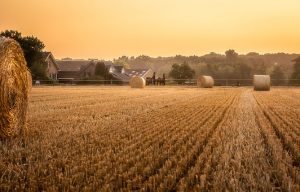
Why is it good to use net replacement film when you’re making hay? First of all, when it comes to silage, there is nothing more consistent than the renewal of fields that have been sown. You know how it goes – silage gets stored in a field during the time it’s not being used, and as the months roll on, it’s time to get some of it harvested. So, when the crops are harvested, what happens? The residue that falls from the harvested crops is a complete waste.
With net replacement film, you have a much more durable product and much more resistant to the elements. That is because this new advance in farm machinery offers high-quality silage in many easier-to-handled bales. It improves feed safety and makes for a smoother, more efficient bale production process. In combination, those benefits will make your silage productions more productive. Net replacement film, or bale wrap as it’s more commonly referred to, is much less permeable than standard plastic film.
In addition to better quality bales and easier handling, net replacement film also has another big edge in cost savings. Instead of buying new plastic forage mats every year, you can just purchase net replacement film for every field you have and save even more money. Hay is always cheaper to produce, so the net wraps that can be purchased for your fields pay for themselves after just one season. Plus, the net wraps last a long time. They hold up against all kinds of weather conditions, so you won’t have to replace them anytime soon.
There are two major types of net replacement wrapping products available on the market. The first is clear vinyl, which is the most common in most fields. It is made of a vinyl-like material that holds airtight and does not let moisture pass through it. This type of wrapping provides good protection from sunlight and protects your plants from intense UV light that can damage them over the years.
The other type of wrapping product available on the market is made of polyethylene. Unlike vinyl, it does not have a plasticized coating on the exterior. Instead, it consists of a mesh-like material that has an outer surface made of high-quality silica. The mesh-like material allows for more direct absorption of nutrients and moisture, which leads to a higher quality bale production.
Both vinyl and polyethylene net replacement film came in a variety of colour options. You can easily determine the wrapping product that’s right for you by simply looking at the colour options. The more colour options you have, the more diverse the choices you’re going to have. In addition to colour, you should also look at the different mat sizes. If you’re looking for a lightweight net wrap to be used as a border or a thicker one for larger plantings, you’ll need to consider the mat size that’s right for your needs.
Many people are confused about whether to use polycrop props or net replacement film when they’re covering their forage beds. While both of these products will produce a high-quality finish for your forage crops, there are some important differences between the two. Net wrap is typically considered the better of the two because of its ability to provide moisture and nutrients to your plants for longer periods.
For example, polycrop props will generally last for several years and are inexpensive to purchase. However, they will degrade after continuous exposure to the sun and wind and begin to lose their ability to retain moisture if they aren’t maintained properly. This means that if you’re planning on covering a large area with them, it would be more cost-effective and beneficial to purchase net replacement film instead. The chemical compound datasheet you order will list the number of grains per square inch of coating and help you determine the best product for your situation.